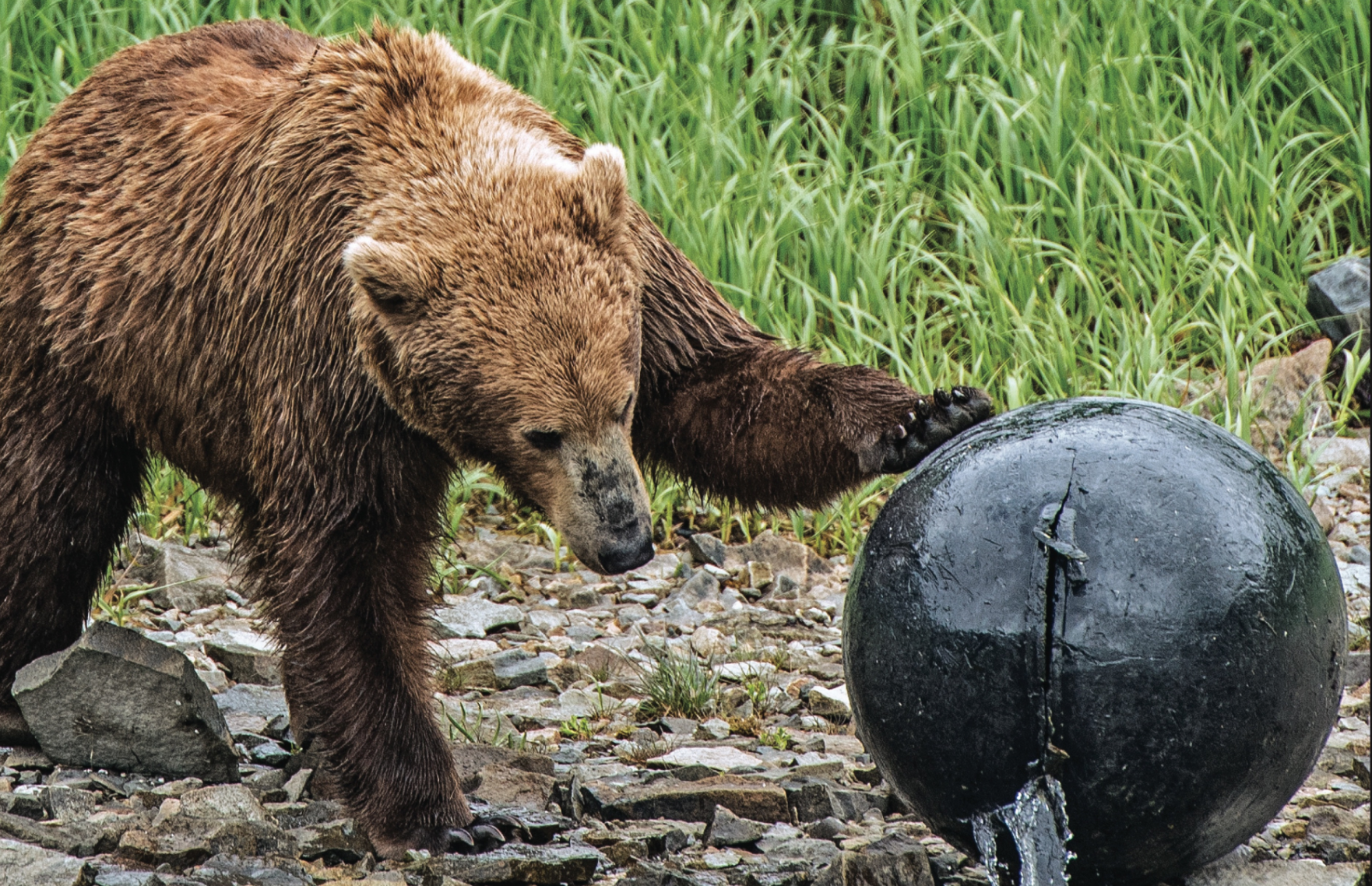Plastic items remain favorite toys for bruins
IT HAD TO BE THERE—a bright red, six-gallon plastic can full of gas. I was depending on every drop. I’d marked the spot for my cache on my way upstream two days before: a high bank, just below a distinctive slough. Had it been stolen way out here?
Then I glimpsed a flicker of color 20 feet away: my can tipped on its side in the brush. How the hell did it get way over there? Relieved, I thrashed through the willows and grabbed the handle. Empty. I found the puncture on the jug’s lower corner and the scenario snapped into focus. My gas can had become a toy for a passing grizzly. He’d batted the can around, then given it a chomp. Shaking off an acrid mouthful, he’d wandered on his way.
We all carry visions of bears lurking in the shadows. But, as anyone who’s traveled much in bush Alaska knows, the real menace is often to our unattended gear, camps and cabins. The longer the time alone, the greater the risk, but in high-tra ffic areas, an hour may be too much. Even a young bear is capable of in flicting breathtaking damage in a matter of minutes: ripping o sheets of nailed down plywood, dismantling equipment, demolishing building interiors. I’ve gotten o pretty lightly in my 37 years of Alaska bear dealings: a couple of gas caches destroyed, a framed wall tent ripped to rags, plus plenty of tooth and claw marks here and there—most recently, on my septic tank vent at our Haines-area homestead.
“For reasons best known to the ursine mind, nothing says fun quite as much as plastic and rubber products..”
Practically all my friends with cabins out in the country have had their ursine wreckingcrew tales. John Cooper had the sod-and-pole roof of his old cabin torn through by an ambitious black bear; Seth Kantner had his new place at the Agi River trashed several months ago by a late-fall grizzly that worked around his bear-proofing measures.
Of course, aromas drifting from a cabin, boat or plane to a bear’s formidable nose are invitations to mayhem, but there’s often far more to ursine hooliganism than an easy meal. Like humans, Alaska’s bears—black, brown or grizzly and polar—are highly intelligent and driven by insatiable curiosity. And as master omnivores that usually manage to find plenty to eat, they often have excess time on their paws. Any novel object they encounter on their turf is fair game for investigation, which may translate to a casual sniff or far more—chewing and batting and clawing with a blend of dexterity and stunning strength, often to the point of utter destruction.
I don’t figure bears thrashing our gear are operating out of some deep-seated malice or vicious nature; in fact, pretty much the opposite. I’ve watched a half dozen bears fooling with human-made objects, and every time, my impression was that they were, above all, thoroughly enjoying themselves—engaging in the sort of play a dog would.
For reasons best known to the ursine mind, nothing says fun quite as much as plastic and rubber products, including my poor gas can and thousands like it, plus innumerable snowmobile seats, coolers and tires. Probably it’s that chewy, stretchy texture that’s attractive, the same reason we like gum.
To witness this behavior, it’s hard to beat the southwestern coasts of Alaska, due to the amount of fishing-fleet plastic washed onto those exposed shores and a corresponding dense concentration of brown bears. June is an especially good bet, since bears tend to be patrolling the beaches then. Sure, they’re feeding on vegetation and washed-up carcasses and engaging in mating-season behavior. But they also keep a sharp lookout for entertaining objects. In a late spring during a three-day stay at Katmai Wilderness Lodge, I watched two different bears in extended play time with a variety of plastic objects. One swatted a large, water-filled black plastic fishing buoy around the beach like a giant medicine ball; another goofed around with a variety of items including a blue tarp, a sandal and a fish tote. At one point, the second bear rolled on his back, batting and wrestling the tarp with a huge, foolish grin on his face. Bears and plastic—who knew?

